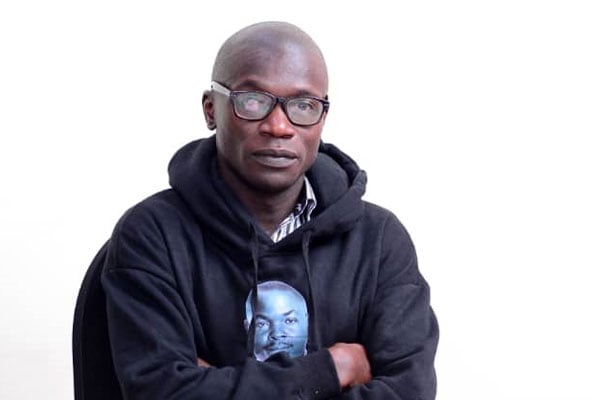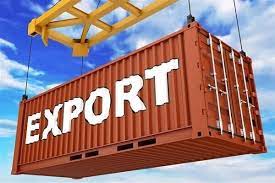Prime
Fears soar as Kenya dangles imports ban

Cargo trucks exit Uganda for Kenya at the Busia border point on August 22. Kenya in recent years has been Uganda’s biggest trade partner. PHOTO/MICHAEL KAKUMIRIZI
What you need to know:
- President William Ruto says his administration is drafting a policy that will not only ensure available raw materials are exploited but also manufacturers are protected.
Kenya’s decision to ban the importation of goods it can manufacture locally—particularly steel and iron products—starting next year – has triggered new anxieties in Uganda.
Kenya President William Ruto announced a fortnight ago that his administration is in the latter stages of drafting a policy that will not only ensure available raw materials are exploited but also manufacturers are protected.
“I have instructed the Cabinet Secretary for Trade and his team to work on a policy framework to ensure we increase our industrialisation percentage, which had dropped from nine to seven percent,” President Ruto said while opening Devki Steel Mills, adding that 16 such companies had folded in the past five years, thanks to stiff competition from foreign companies.
It is unclear whether the broad-brush measure of foreign companies will include those from the East African Community (EAC).
Mr Simon Kaheru, the chairperson of The East African Business Council (EABC), told Sunday Monitor that “the pronouncement appears to be a way of introducing additional levies to support local sourcing and keep jobs in Kenya.”
He added: “We are operating as an East African Common Market and we must continue to encourage governments to focus on implementing policies that grow the wider economy.”
Roofings Group, which has a branch in Kenya, has adopted a wait-and-see approach as it sizes up what appears to be a protectionist stance by the Ruto administration. Mr Stuart Mwesigwa, the group’s business development manager, told Sunday Monitor that they “have to wait for details” not least because “we export many products to Kenya.”
CET status
Experts say any ban on steel and iron imports from the EAC will run counter to the EAC Common External Tariff (CET), a key instrument of the Customs Union meant to foster regional integration.
The CET is intended to shield local manufacturers against competition from similar goods imported from outside the EAC. Its effect is that all EAC partner states are supposed to levy a 35 percent tariff on goods manufactured outside the community and yet they can be produced locally.
“We are hoping what Kenya is doing will be with the spirit of the EAC,” Mr Thadeus Musoke Nagenda, the chairperson of Kampala City Traders Association (Kacita), said, adding that the association hopes the pronouncement isn’t Kenya-centric “because we have always advocated for the protection of the local industry in East Africa.”
The contents of President Ruto’s Kenya Kwanza (loosely translated as Kenya First) manifesto are, however, ominous. Mr Ruto denounced Kenya’s reliance on food imports—including those from Uganda—that increased from 10 percent to 17 percent in the last decade. This translated into a 2.5-fold increase in money spent from $1.2 billion to $3 billion.
“…agriculture is our most globally competitive sector. Adding value to our agricultural exports is a more viable route to grow our manufactured exports than industries that are heavily dependent on both imported machinery and raw materials, and whose only value addition is labour,” Mr Ruto revealed in his manifesto.
Hot button issue
Maize in Kenya is now a hot button issue after the Ruto administration cleared the importation of tens of thousands of tonnes of the genetically modified crop. This came after scarcity of the staple occasioned by drought that saw its price shoot up.
The current destination of the vast bulk of Uganda’s maize exports is South Sudan. Once upon a time, it used to be Kenya. In 2020, maize exports to Uganda’s western neighbour were worth $49.07m (Shs182b) as per the United Nations Comtrade database on international trade. The Kenyan government then announced a ban on maize imports from Uganda in 2021 on account of high levels of aflatoxin.
This year, following the surge of maize flour prices, Kenya made a U-turn.
This came after crop failure due to poor weather and a shift in the movement of Uganda’s maize to South Sudan had seen flour prices in Kenya increase to Shs6,707 (Ksh210) a 2kg packet, up from Shs3,832.8 (Ksh120) at the start of the year.
After the price of maize flour soared to unprecedented levels, President Ruto made clear the need to decouple agriculture’s impact on the cost of living in Kenya. To achieve this, Mr Ruto has opted not to source imports from the EAC but rather purchase GMO maize.
To compound matters, lawmakers from Kenya’s rift valley—which is near Uganda’s porous border—asked their government to stop maize imports until early next year during the region’s next harvest of the staple crop.
“For farmers in the North Rift and most parts of Kenya where we plant maize, this is the harvest season and we thought it wise that the Ministry of Trade should hold on the importation of maize until we harvest ours and the NUCPB (National Cereals and Produce Board) opens the stores for farmers to deliver their produce,” Mr Samson Cherargei, who represents Nandi County in Kenya’s Upper House, said.
Trading places
In years gone, Kenya has been Uganda’s biggest trade partner. Kenyan exports to Uganda in 2020 amounted to $673.66m (Shs2.5 trillion), while Uganda’s exports to Kenya—including sugar and confectionaries, coffee, honey, dairy products, eggs and cereals—stood at $465.55m (Shs1.7 trillion) during the same period. When new figures were released mid this year, a new reality dawned—Kenya’s exports to Tanzania grew the sharpest among all EAC markets in the six months to June.
Figures released by the Kenyan central bank showed that her exports to Uganda dipped by 8.5 percent to $386.3m (Shs1.4 trillion) during the half-year compared to a similar period in 2021. Furthermore, figures released by Kenya’s National Bureau of Statistics in September showed that the US had overtaken Uganda as the largest buyer of Kenyan goods.
If the latest ban is implemented, experts say the intention by the Ruto administration will likely be to boost its manufacturing sector. In his manifesto, Mr Ruto made clear the fact that Kenya’s manufacturing sector is headed in the wrong direction at a time when the country should be industrialising.
Protectionist stance
Museveni directive
In the manifesto, Mr Ruto made no mention of protectionism as a way of galvanising the Kenyan manufacturing sector. He instead said building products such as steel and iron sheets were already one of Kenya’s leading manufactured exports to neighbouring countries.
“There is potential to leverage on housing programmes to scale up and broaden the range of products. Establishing standards will enable Jua Kali (small-scale artisans) to produce mass fittings such as windows and doors,” the manifesto states.
Putting that into practice has, however, become hard. This, experts say, has resulted in episodic protectionism.
“Rather than close borders or focus on building an industry in one part of the community at the expense of others, we should aim at harnessing and consolidating our joint strengths while supporting existing industries to grow more,” Mr Kaheru reasons, adding, “The steel industry in Uganda is growing in leaps and bounds, for instance, with some value chains that are 100 percent Ugandan. If we can do the same and make East Africa with a larger basket of raw materials, then we benefit more East Africans and create wealth and jobs for more of our people.”





